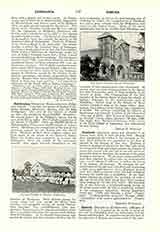

Zadori (DREXLER), JANOS, ecclesiastical writer, b. at Katlocz, County of Neutra, Hungary, March 6, 1831; d. at Gran, December 30, 1887. He studied at the Pazmaneum of the University of Vienna. His favorite branches were modern languages, literature, and the natural sciences. Ordained priest in December, 1854, he was chaplain at Balassa-Gyarmat for ten years, and from 1864 to the end of his life taught dogmatic theology at the archiepiscopal seminary at Gran. He was a member of the metropolitan chapter and a domestic prelate of Leo XIII. He declined an appointment to the See of Neusohl. Thirty-eight of his works have appeared in print, among them some of a devotional character and memorial sermons, one on Count Stephen Szechenyi. His principal works are: “A tarsadolom alapoloci” (The fundamental principles of human society), Budapest, 1864, in which he develops the ideas of Lacordaire and others against modern errors; “Utivazlatok Oloszorszagbol” (Sketches of Italy), Budapest, 1867; “A rimai katakombak” (The Roman catacombs), with 19 plates, Budapest, 1868; “Spanyol At” (Journey through Spain), Budapest, 1868; “IX Pius papa eletc” (Life of Pius IX), Gran, 1869; “A Jesus Szive ajtatossazanak tortenete, mivolta, hittani alapja” (The devotion to the Sacred Heart of Jesus, its nature, history, and theological foundation), Gran, 1878; “Szus Maria szeplotelen sivenek” (The veneration of the Immaculate Heart of Mary), Gran, 1879; “Szent Peter ket levele” (The two letters of St. Peter), Budapest, 1881, for which he received great praise from the theological faculty of Gran; “Syntagma theologise fundamentalis”, Gran, 1882 (see “Theol. Quartalschrift”, Tubingen, 1887, 691, and “Zeitschrift fur kath. Theol.”, Innsbruck, 1884, 584). From 1870-86 he edited the theological magazine “Uj magyar Sion” (New Hungarian Sion).
FRANCIS MERSHMAN

